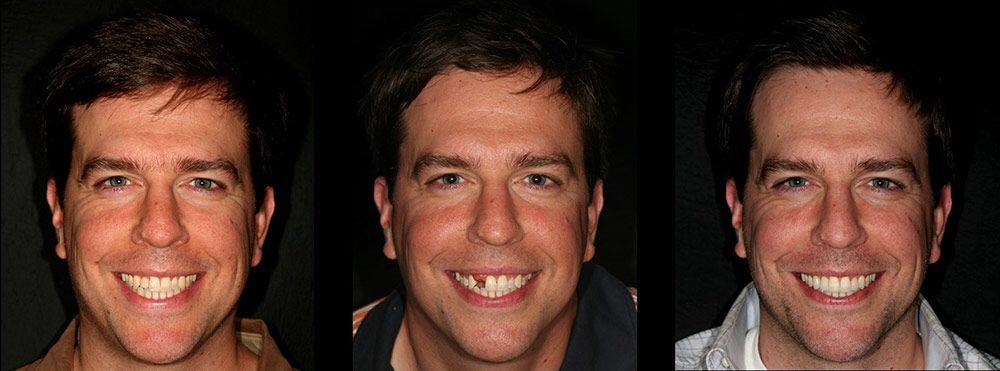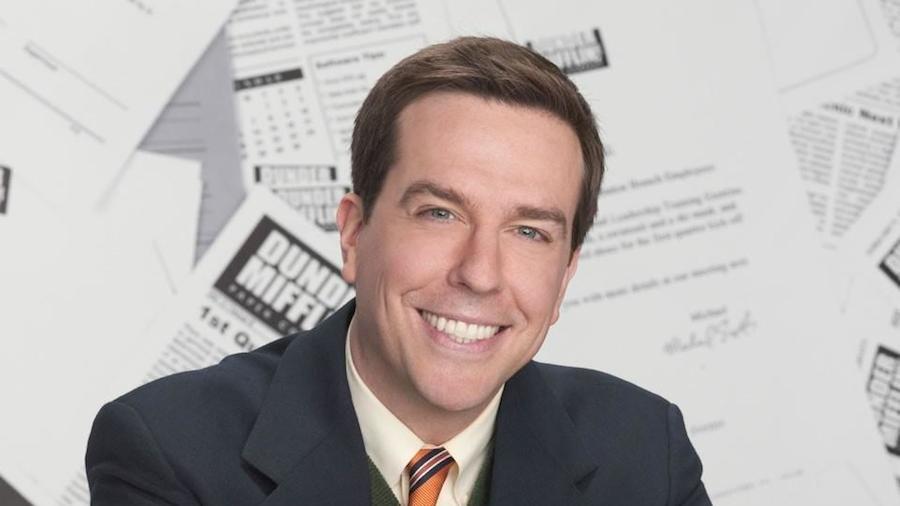The cultural conversation around Ed Helms Teeth did not begin in a dentist’s chair but on a cinema screen. Most audiences first became aware of his altered smile not through a memoir or a medical interview, but through a single moment in The Hangover, where his character appears with a visibly missing anterior tooth. That frame neither accidental nor purely cosmetic converted Ed Helms Teeth into a visual motif in comedy history. It showed how a seemingly minor modification in the dental region can alter not only a character’s silhouette, but the emotional grammar of a scene.
Hollywood rarely lets dental aesthetics remain incidental. A smile can read as innocence, menace, self doubt or bravado. When comedians age on camera, they do so under the forensic gaze of slow motion internet, where every premolar and incisor becomes a datapoint in public interpretation. In this sense, the discussion around Ed Helms Teeth is not trivia about enamel but an example of how teeth operate like punctuation in visual storytelling subtle, structural, and legible even without being named.
What Will You Read?

The Cinematic Function of Ed Helms Teeth in Character Construction
The decision to visibly alter or expose Ed Helms Teeth in The Hangover franchise functioned like a narrative accelerant. Instead of deploying exposition or dialogue to convey shock, collapse or comedic panic, the image of a missing tooth compresses all of that meaning into a single visual shortcut. In film theory, this is a cue level intervention: an engineered micro rupture in facial continuity to trigger a macro reaction in viewers. The tooth is not merely absent it is narratively loud.
In comedy, bodily micro deformations routinely carry psychological freight. A limping gait, a skewed tie, a reddened eye each can telegraph a script page worth of context in half a second. Ed Helms Teeth enter that lineage as a calibrated imperfection that authenticates chaos without verbalizing it. The audience laughs not because something is “medically interesting” but because the face has been temporarily re indexed away from normalcy, and that deviation reads instantly as story.
What makes this case unusually instructive is that the dental image outlived the scene. Long after the hangover plot faded from cultural memory, screenshots of Ed Helms Teeth circulated independently, detached from narrative context yet still legible. It became an autonomous symbol a reminder that the mouth can serve cinema the way costume design or lighting does: as deliberate narrative instrumentation rather than a passive anatomical fact.
How Media Turned Ed Helms Teeth into a Cultural Object
Once screenshots from The Hangover detached from the film and began circulating on forums, blogs and meme pages, Ed Helms Teeth stopped being a prop decision and started operating as a media object. The image became portable: stripped of dialogue, stripped of narrative scaffolding, but still instantly interpretable. Media rarely needs context when the face is the carrier. A visible dental irregularity requires no caption; the human brain processes it as signal before language even loads.
This is the pattern with celebrity dentistry discourse in general. Cameras produce immortal evidence, then audiences metabolize that evidence into meaning. In the case of Ed Helms Teeth, the meme ification did not ridicule dentistry; it weaponized recognizability. The missing tooth became shorthand for “catastrophic night,” “comic breakdown,” “credible hangover,” even in contexts unrelated to the film. The physical alteration had migrated from cinema to semiotics.
When a body part becomes detachable as a concept meaning it can circulate without the host narrative it graduates from anatomy to iconography. That is precisely what happened with Ed Helms Teeth: the image floated free of Helms himself and began living as a stable symbol in digital culture. The mouth stopped being biological and started being referential.
Why Ed Helms Teeth Dominate Interpretation More Than Dialogue
Visual anomalies outperform verbal material in media economies because they scale faster. A line of dialogue cannot be screenshotted into virality the way Ed Helms Teeth can. A tooth is a unit of symmetry and identity disturb it, and the viewer experiences an immediate perceptual jolt. That jolt is cognitively cheap and socially shareable.
This is why media prefers facial deviations over narrative nuance. A newsletter essay about a character’s panic will not travel the way a still frame of a missing incisor travels. Ed Helms Teeth function like pre compressed narrative: they arrive already “decoded.” No expertise, no medical literacy, no backstory needed.
There is also a psychological asymmetry: audiences forgive everything except visual discontinuity. A character may lie, panic or collapse narratively with little residue but if the face changes, the event imprints. Teeth sit in the center of that perceptual grid. They are the last anatomical zone audiences expect to see altered without warning, which is why the Ed Helms Teeth image maintained cross platform velocity for years after release.
The consequence is instructive: whether organic or engineered, dental changes in public figures do not stay local to dentistry they metastasize into narrative infrastructure. Cameras do not just record teeth; they give them interpretive jurisdiction.
Beyond Cinema: What Ed Helms Teeth Reveal About Public Appetite for Micro Changes
The sustained interest in Ed Helms Teeth after the film years suggests that the public does not merely consume stories it consumes surfaces. Teeth belong to a class of facial elements that can be modified without destroying identity; that makes them narratively “safe” but visually disruptive. People are magnetized by controllable deviations not deformity, not trauma, but reversible distortions. That is the exact register where Ed Helms Teeth operated: an engineered imperfection that reads as narrative collateral rather than biological crisis.
This appetite is visible across species of celebrity actors, athletes, news anchors, reality contestants but the dental region is unique. If a nose changes, people treat it as a new face; when teeth change, people treat it as a new chapter. The face survives; the reading of the face doesn’t. The Ed Helms Teeth case illustrates how media literate audiences intuitively assign meaning to micro edits without needing explicit framing.

The Ed Helms Teeth Case as Proof of a Larger Pattern
What appears at first glance as a one off comedic gag actually profiles a stable pattern: in a saturated attention economy, tiny facial edits outperform large narrative arcs. A missing anterior tooth became a cultural file format because it compressed an affective state shock, chaos, comedy into a single visible unit. That is the reason Ed Helms Teeth stayed culturally “live” even after the franchise left theaters.
The pattern also reframes how we think about authenticity. Paradoxically, a scripted absence of a tooth is perceived as more “real” than written dialogue. The face is the one location where audiences suspend forensic skepticism; they trust what they see there more than what they hear. So when cinema weaponizes the mouth, the edit acquires truth value, independent of authorial intent. Ed Helms Teeth became convincing precisely because the mouth is not normally allowed narrative theatricality.
In that sense, the case is less about orthodontics and more about epistemology: it demonstrates that the mouth now operates as a credibility interface in visual culture. Not because enamel matters but because perception does.
Why the Ed Helms Teeth Story Endures
The endurance of Ed Helms Teeth is not an anomaly; it is evidence of how twenty first century spectatorship works. Audiences no longer wait for thematic arcs to decode a performance. They extract meaning from surfaces fast, pre verbally, and with high confidence. A single altered tooth supplied what pages of dialogue would have required time to construct. It was narrative density disguised as anatomy.
What the industry learned even if silently is that dentistry inside film is not about realism but control. Teeth can tilt the register of a character without rewriting the script, without rewiring plot logic, and without eroding audience trust. That is why Ed Helms Teeth outlived the scenes that spawned them: the image performed cultural work more efficiently than language.
Seen in this light, the transformation was never just oral or cosmetic; it was semiotic. The tooth was not removed to shock the palate but to re route interpretation. And that, more than any clinical dimension, is why the Ed Helms Teeth moment remains one of the rare cases where the smallest possible physical intervention produced the largest possible narrative return.